Gap-Free Tuning of Second and Third Harmonic Generation in Mechanochemically Synthesized Nanocrystalline LiNb1−xTaxO3 (0 ≤ x ≤ 1) Studied with Nonlinear Diffuse Femtosecond-Pulse Reflectometry
Abstract
1. Introduction
2. Materials and Methods
2.1. Mechano-Chemical Synthesis of LNT Nanocrystallites
2.2. Pellet Preparation
2.3. Remission Spectroscopy
2.4. Nonlinear Diffuse Femtosecond Pulse Reflectometry
3. Sample Characterization
Remission Spectroscopy
4. Nonlinear Diffuse fs-Pulse Reflectometry
4.1. Harmonic Generation
4.2. Diffuse fs-Pulse Remission Spectra
4.3. Wavelength Dependence of the Harmonic Intensities
4.4. Intensity Dependencies of Harmonic Emission
4.5. Harmonic Ratio
4.6. Bandwidths of Harmonic Emission
5. Discussion
5.1. Application of Nonlinear Diffuse fs-Pulse Reflectometry to LNT Nanoparticle Pellets
5.2. Characterization of LNT Nanocrystallites from the (Non-)linear Optical Perspective
5.3. Harmonic Generation
6. Summary and Conclusions
Author Contributions
Funding
Data Availability Statement
Acknowledgments
Conflicts of Interest
Abbreviations
| LN | Lithium Niobate |
| LT | Lithium Tantalate |
| LNT | Lithium Niobate Tantalate |
| NLO | Nonlinear optical |
| OPA | Optical parametric amplifier |
| SHG | Second harmonic generation |
| THG | Third harmonic generation |
| FHG | Fourth harmonic generation |
| UV | Ultra-violet |
| VIS | Visual |
| NIR | Near-infrared |
References
- Boyd. Nonlinear Optics; Academic Press: Cambridge, MA, USA, 1992. [Google Scholar]
- Arizmendi, L. Photonic applications of lithium niobate crystals. Phys. Status Solidi A 2004, 201, 253–283. [Google Scholar] [CrossRef]
- Langrock, C.; Kumar, S.; McGeehan, J.E.; Willner, A.E.; Fejer, M.M. All-Optical Signal Processing Using χ(2) Nonlinearities in Guided-Wave Devices. J. Light. Technol. 2006, 24, 2579. [Google Scholar] [CrossRef]
- Jin, H.; Liu, F.; Xu, P.; Xia, J.; Zhong, M.; Yuan, Y.; Zhou, J.; Gong, Y.; Wang, W.; Zhu, S. On-Chip Generation and Manipulation of Entangled Photons Based on Reconfigurable Lithium-Niobate Waveguide Circuits. Phys. Rev. Lett. 2014, 113, 103601. [Google Scholar] [CrossRef]
- Duong, N.M.H.; Saerens, G.; Timpu, F.; Buscaglia, M.T.; Buscaglia, V.; Morandi, A.; Müller, J.S.; Maeder, A.; Kaufmann, F.; Solntsev, A.S.; et al. Spontaneous parametric down-conversion in bottom-up grown lithium niobate microcubes. Opt. Mater. Express 2022, 12, 3696–3704. [Google Scholar] [CrossRef]
- Jankowski, M.; Langrock, C.; Desiatov, B.; Marandi, A.; Wang, C.; Zhang, M.; Phillips, C.R.; Lončar, M.; Fejer, M.M. Ultrabroadband nonlinear optics in nanophotonic periodically poled lithium niobate waveguides. Optica 2020, 7, 40–46. [Google Scholar] [CrossRef]
- Yu, N.E.; Kurimura, S.; Nomura, Y.; Kitamura, K. Stable high-power green light generation with a periodically poled stoichiometric lithium tantalate. Mater. Sci. Eng. B 2005, 120, 146–149. [Google Scholar] [CrossRef]
- Nakamura, K.; Kurz, J.; Parameswaran, K.; Fejer, M.M. Periodic poling of magnesium-oxide-doped lithium niobate. J. Appl. Phys. 2002, 91, 4528–4534. [Google Scholar] [CrossRef]
- Meyn, J.P.; Laue, C.; Knappe, R.; Wallenstein, R.; Fejer, M. Fabrication of periodically poled lithium tantalate for UV generation with diode lasers. Appl. Phys. B 2001, 73, 111–114. [Google Scholar] [CrossRef]
- Abedin, K.S.; Ito, H. Temperature-dependent dispersion relation of ferroelectric lithium tantalate. J. Appl. Phys. 1996, 80, 6561–6563. [Google Scholar] [CrossRef]
- Bäumer, C.; Berben, D.; Buse, K.; Hesse, H.; Imbrock, J. Determination of the composition of lithium tantalate crystals by zero-birefringence measurements. Appl. Phys. Lett. 2003, 82, 2248–2250. [Google Scholar] [CrossRef]
- Duplain, G.; Van Neste, R. Birefringent Optical Temperature Sensor and Method. U.S. Patent US20070133004A1, 4 July 2007. [Google Scholar]
- Glazer, A.M.; Thomas, P.A.; Zhang, N.; Bartasyte, A.; Keeble, D.S. Sensing Physical Parameters Using Birefringence. WIPO (PCT) Patent WO2011158022A1, 22 December 2011. [Google Scholar]
- Sidorov, N.; Palatnikov, M.; Serebryakov, Y.; Rogovoi, V.; Melnik, N. Structural ordering and ferroelectric properties of LiTaxNb1−xO3 Solid Solutions. Ferroelectrics 1996, 188, 31–40. [Google Scholar] [CrossRef]
- Jaschin, P.W.; Varma, K.B.R. Structural evolution and second harmonic properties of lithium niobate–tantalate nanocrystals embedded in a borate glass. J. Non-Cryst. Solids 2016, 434, 41–52. [Google Scholar] [CrossRef]
- Huband, S.; Keeble, D.S.; Zhang, N.; Glazer, A.M.; Bartasyte, A.; Thomas, P.A. Crystallographic and Optical Study of LiNb1−xTaxO3. Acta Crystallogr. Sect. B Struct. Sci. Cryst. Eng. Mater. 2017, 73, 498–506. [Google Scholar] [CrossRef]
- Xue, D.; Betzler, K.; Hesse, H. Dielectric properties of lithium niobate–tantalate crystals. Solid State Commun. 2000, 115, 581–585. [Google Scholar] [CrossRef]
- Vasylechko, L.; Sydorchuk, V.; Lakhnik, A.; Suhak, Y.; Wlodarczyk, D.; Hurskyy, S.; Yakhnevych, U.; Zhydachevskyy, Y.; Sugak, D.; Syvorotka, I.I.; et al. Investigations of LiNb1−xTaxO3 Nanopowders Obtained with Mechanochemical Method. Crystals 2021, 11, 755. [Google Scholar] [CrossRef]
- Kijatkin, C.; Eggert, J.; Bock, S.; Berben, D.; Oláh, L.; Szaller, Z.; Kis, Z.; Imlau, M. Nonlinear Diffuse fs-Pulse Reflectometry of Harmonic Upconversion Nanoparticles. Photonics 2017, 4, 11. [Google Scholar] [CrossRef]
- Kurtz, S.K.; Perry, T.T. A Powder Technique for the Evaluation of Nonlinear Optical Materials. J. Appl. Phys. 1968, 39, 3798–3813. [Google Scholar] [CrossRef]
- Bock, S.; Kijatkin, C.; Berben, D.; Imlau, M. Absorption and Remission Characterization of Pure, Dielectric (Nano-)Powders Using Diffuse Reflectance Spectroscopy: An End-To-End Instruction. Appl. Sci. 2019, 9, 4933. [Google Scholar] [CrossRef]
- Kortüm, G. Experimentelle Prüfung der Kubelka-Munk-Theorie. In Reflexionsspektroskopie: Grundlagen, Methodik, Anwendungen; Kortüm, G., Ed.; Springer: Berlin/Heidelberg, Germany, 1969; pp. 175–222. [Google Scholar] [CrossRef]
- Torrent, J.; Barrón, V. Diffuse Reflectance Spectroscopy. In Methods of Soil Analysis Part 5—Mineralogical Methods; Soil Science Society of America: Madison, WI, USA, 2008; pp. 367–385. [Google Scholar] [CrossRef]
- Janecek, M. Reflectivity Spectra for Commonly Used Reflectors. IEEE Trans. Nucl. Sci. 2012, 59, 490–497. [Google Scholar] [CrossRef]
- Roessler, D.M. Kramers—Kronig analysis of non-normal incidence reflection. Br. J. Appl. Phys. 1965, 16, 1359. [Google Scholar] [CrossRef]
- Kijatkin, C.; Bourdon, B.; Klenen, J.; Kocsor, L.; Szaller, Z.; Imlau, M. Time-Resolved Nonlinear Diffuse Femtosecond-Pulse Reflectometry Using Lithium Niobate Nanoparticles with Two Pulses of Different Colors. Adv. Photonics Res. 2021, 2, 2000019. [Google Scholar] [CrossRef]
- López, R.; Gómez, R. Band-gap energy estimation from diffuse reflectance measurements on sol–gel and commercial TiO2: A comparative study. J. Sol-Gel Sci. Technol. 2012, 61, 1–7. [Google Scholar] [CrossRef]
- Wooten, F. Optical Properties of Solids; Academic Press: Cambridge, MA, USA, 1972; Chapter 5; pp. 108–172. [Google Scholar]
- Dhar, A.; Mansingh, A. Optical properties of reduced lithium niobate single crystals. J. Appl. Phys. 1990, 68, 5804–5809. [Google Scholar] [CrossRef]
- Thierfelder, C.; Sanna, S.; Schindlmayr, A.; Schmidt, W.G. Do we know the band gap of lithium niobate? Phys. Status Solidi C 2010, 7, 362–365. [Google Scholar] [CrossRef]
- Zanatta, A.R. The optical bandgap of lithium niobate (LiNbO3) and its dependence with temperature. Results Phys. 2022, 39, 105736. [Google Scholar] [CrossRef]
- He, X.; Li, K.; Liu, M.; He, Y.; Zhang, X.; Zhao, Y.; Xue, D. An optical spectroscopy study of defects in lithium tantalate single crystals. Opt. Commun. 2008, 281, 2531–2534. [Google Scholar] [CrossRef]
- Kato, H.; Kudo, A. New tantalate photocatalysts for water decomposition into H2 and O2. Chem. Phys. Lett. 1998, 295, 487–492. [Google Scholar] [CrossRef]
- Chao, S.; Hung, C.C. Large photoinduced ferroelectric coercive field increase and photodefined domain pattern in lithium-tantalate crystal. Appl. Phys. Lett. 1996, 69, 3803–3805. [Google Scholar] [CrossRef]
- Escobedo Morales, A.; Sánchez Mora, E.; Pal, U. Use of Diffuse Reflectance Spectroscopy for Optical Characterization of Un-Supported Nanostructures. Rev. Mex. De Física 2007, 53, 18–22. [Google Scholar]
- Strickland, D.; Mourou, G. Compression of amplified chirped optical pulses. Opt. Commun. 1985, 56, 219–221. [Google Scholar] [CrossRef]
- Fattahi, H.; Barros, H.G.; Gorjan, M.; Nubbemeyer, T.; Alsaif, B.; Teisset, C.Y.; Schultze, M.; Prinz, S.; Haefner, M.; Ueffing, M.; et al. Third-generation femtosecond technology. Optica 2014, 1, 45–63. [Google Scholar] [CrossRef]
- Rams, J.; Alcázar-de Velasco, A.; Carrascosa, M.; Cabrera, J.M.; Agulló-López, F. Optical damage inhibition and thresholding effects in lithium niobate above room temperature. Opt. Commun. 2000, 178, 211–216. [Google Scholar] [CrossRef]
- Wood, R.M. Laser-Induced Damage of Optical Materials; CRC Press: Boca Raton, FL, USA, 2003. [Google Scholar] [CrossRef]
- Bach, F.; Mero, M.; Chou, M.H.; Petrov, V. Laser induced damage studies of LiNbO3 using 1030-nm, ultrashort pulses at 10–1000 kHz. Opt. Mater. Express 2017, 7, 240–252. [Google Scholar] [CrossRef]
- Shen, Y.R. Principles of Nonlinear Optics; Wiley-Interscience: Hoboken, NJ, USA, 1984. [Google Scholar]
- Zelmon, D.E.; Small, D.L.; Jundt, D. Infrared corrected Sellmeier coefficients for congruently grown lithium niobate and 5 mol.% magnesium oxide–doped lithium niobate. J. Opt. Soc. Am. B 1997, 14, 3319–3322. [Google Scholar] [CrossRef]
- Smith, D.Y.; Inokuti, M.; Karstens, W. A generalized Cauchy dispersion formula and the refractivity of elemental semiconductors. J. Phys. Condens. Matter 2001, 13, 3883. [Google Scholar] [CrossRef]
- Born, M.; Wolf, E. Principles of Optics; Pergamon Pr: Oxford, UK, 1980; p. 92. [Google Scholar]
- Moutzouris, K.; Hloupis, G.; Stavrakas, I.; Triantis, D.; Chou, M.H. Temperature-dependent visible to near-infrared optical properties of 8 mol% Mg-doped lithium tantalate. Opt. Mater. Express 2011, 1, 458–465. [Google Scholar] [CrossRef]
- Diels, J.C.; Rudolph, W. Ultrashort Laser Pulse Phenomena: Fundamentals, Techniques, and Applications on a Femtosecond Time Scale, 2nd ed.; Optics and Photonics; Academic Press: Cambridge, MA, USA, 2006. [Google Scholar]
- Mololkin, A.A.; Roshchupkin, D.V.; Emelin, E.V.; Fahrtdinov, R.R. High-temperature poling treatment of congruent ferroelectric LiNb0.5Ta0.5O3 solid solution single crystals. Mod. Electron. Mater. 2021, 7, 17–20. [Google Scholar] [CrossRef]
- Wood, I.G.; Daniels, P.; Brown, R.H.; Glazer, A.M. Optical birefringence study of the ferroelectric phase transition in lithium niobate tantalate mixed crystals: LiNb1-xTaxO3. J. Phys. Condens. Matter 2008, 20, 235–237. [Google Scholar] [CrossRef] [PubMed]
- Phillips, W.; Hammer, J.M. Formation of lithium niobate-tantalate waveguides. J. Electron. Mater. 1975, 4, 549–565. [Google Scholar] [CrossRef]
- Fukuda, T.; Hirano, H. Solid-Solution LiTaxNb1−xO3 Single Crystal Growth by Czochralski and Edge-Defined Film-Fed Growth Technique. J. Cryst. Growth 1976, 35, 127–132. [Google Scholar] [CrossRef]
- Bartasyte, A.; Glazer, A.M.; Wondre, F.; Prabhakaran, D.; Thomas, P.A.; Huband, S.; Keeble, D.S.; Margueron, S. Growth of LiNb1−xTaxO3 Solid Solution Crystals. Mater. Chem. Phys. 2012, 134, 728–735. [Google Scholar] [CrossRef]
- Roshchupkin, D.; Fakhrtdinov, R.; Redkin, B.; Karandashev, V.; Khvostikov, V.; Mololkin, A.; Siminko, O.; Zabelin, A. Growth of ferroelectric lithium niobate-tantalate LiNb(1−x)TaxO3 crystals. J. Cryst. Growth 2023, 621, 127377. [Google Scholar] [CrossRef]
- Radonjić, L.; Todorović, M.; Miladinović, J. Nanostructured sodium lithium niobate and lithium niobium tantalate solid solutions obtained by controlled crystallization of glass. Mater. Sci. Eng. B 2005, 121, 64–70. [Google Scholar] [CrossRef]

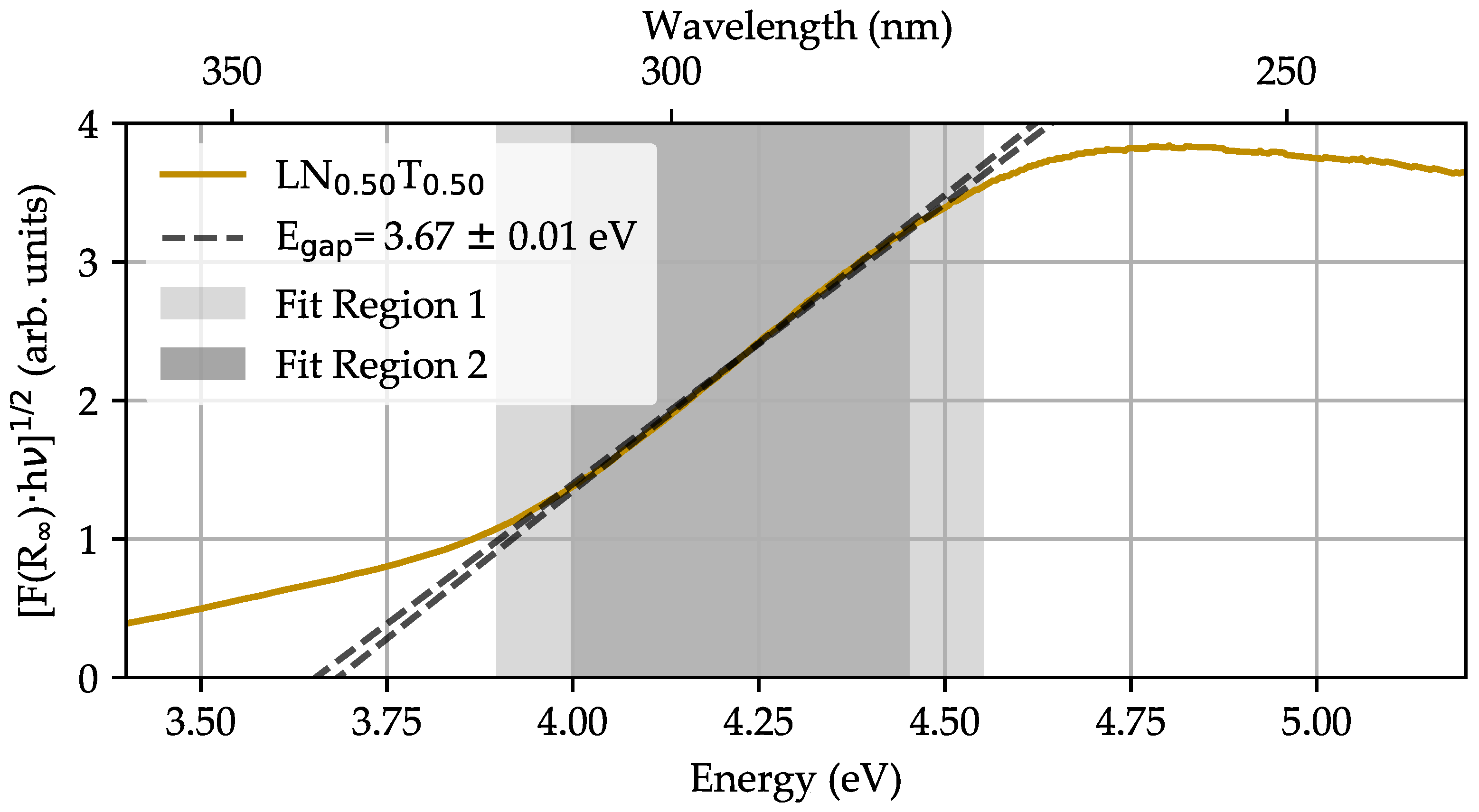

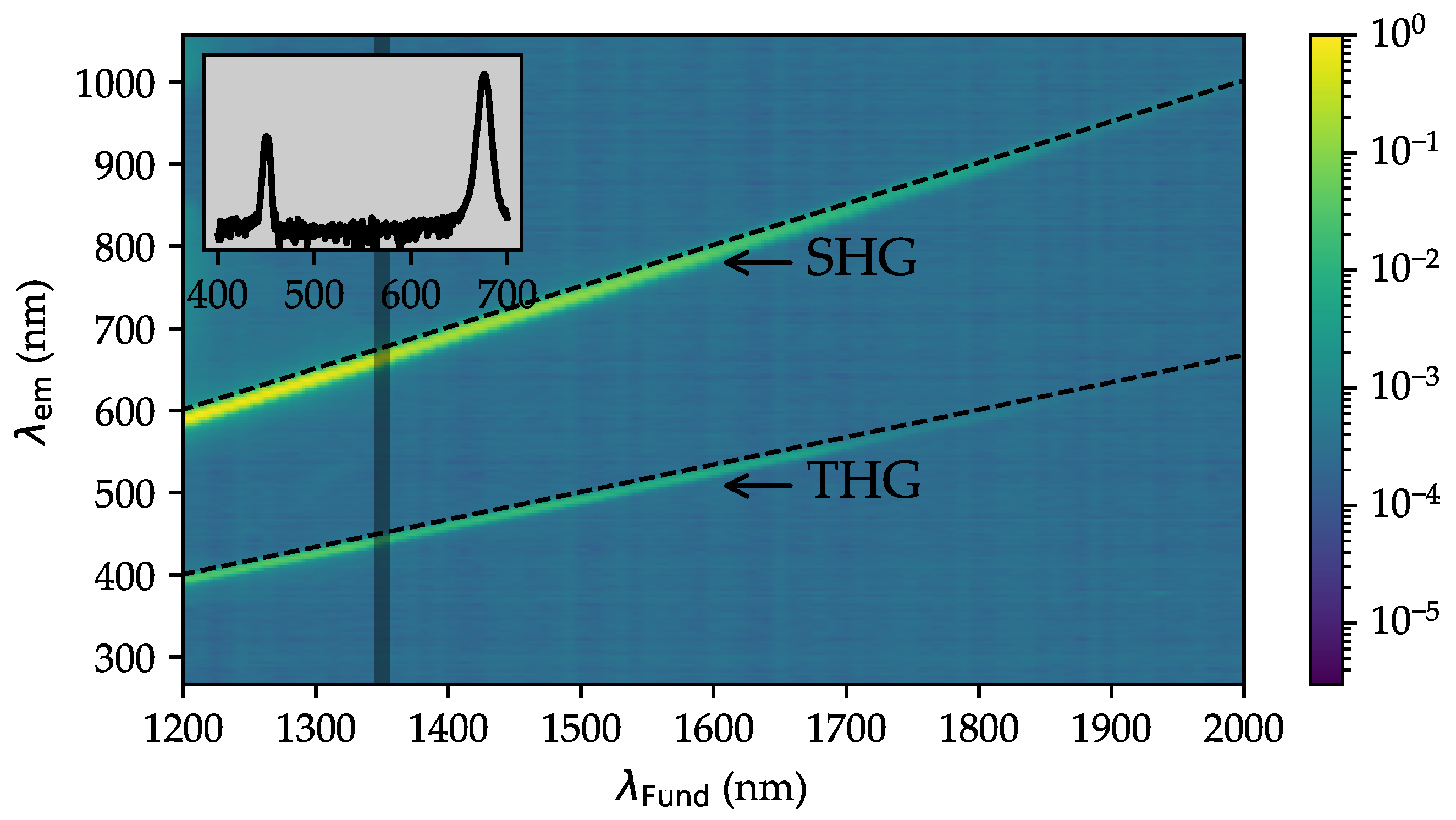
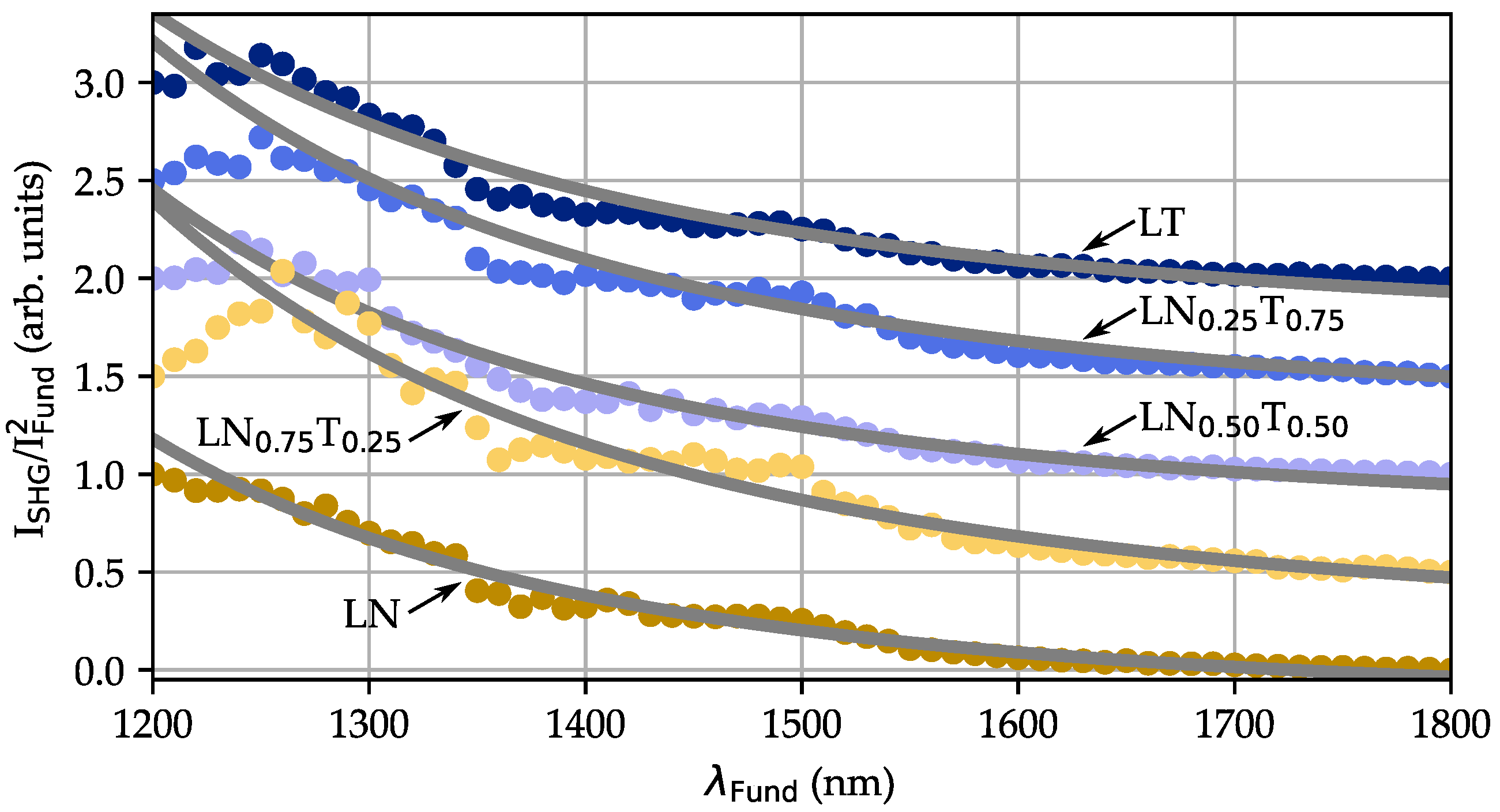
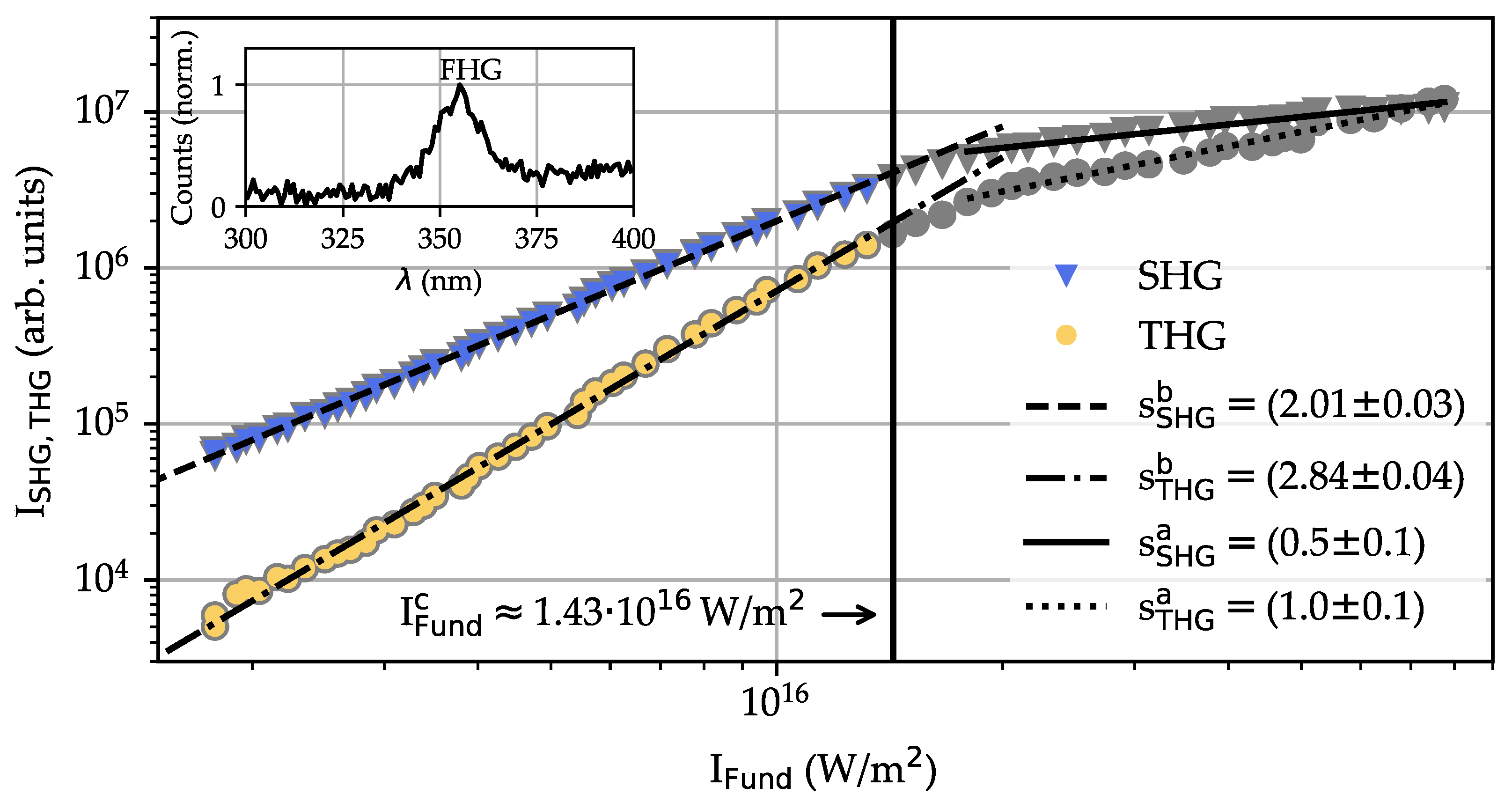
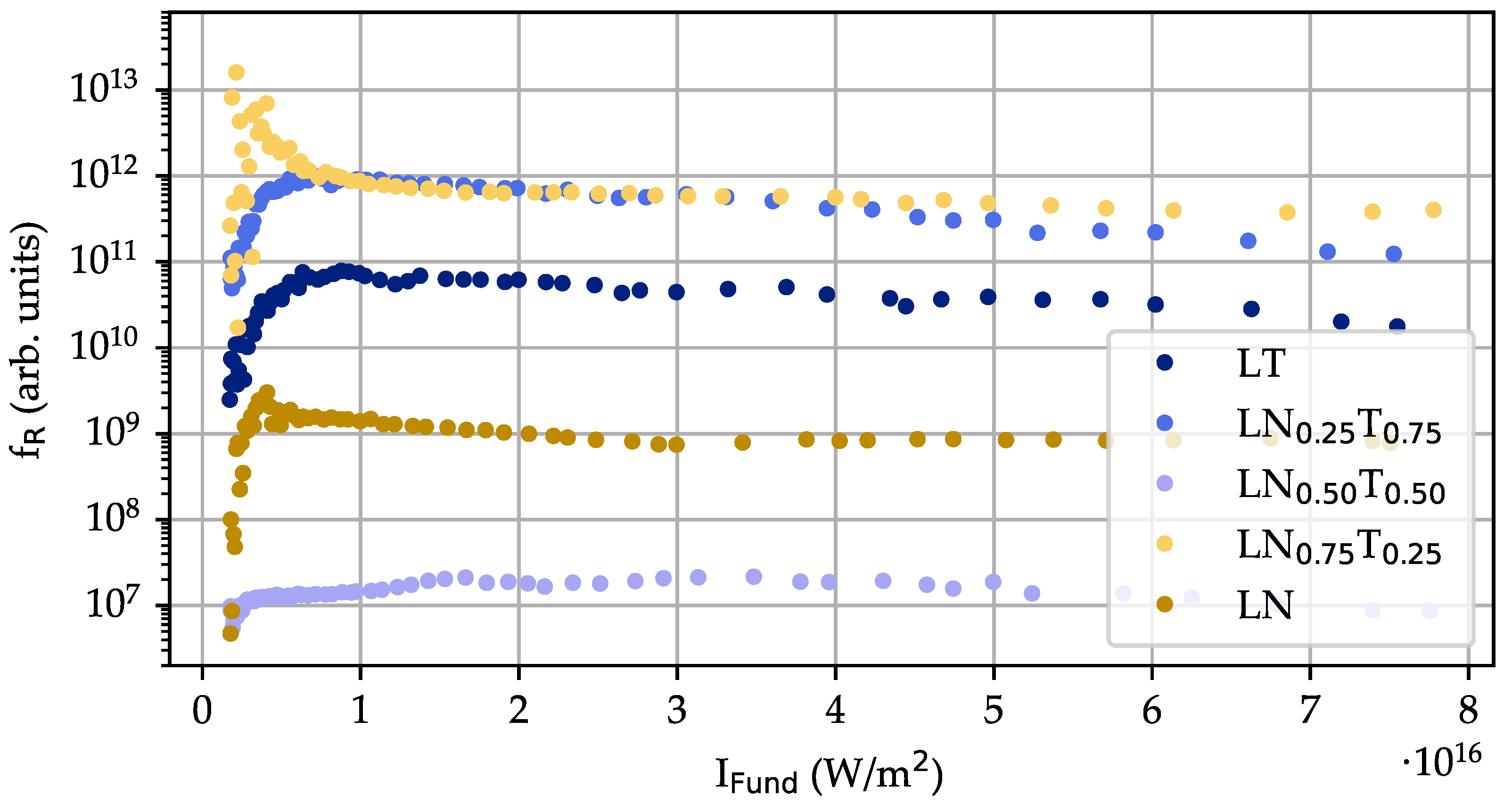

| Composition x | <> (nm) | <> (nm) | [5th perc, 95th perc] |
|---|---|---|---|
| Ref. [18] | (nm, nm) | ||
| 0.00 | 206 | [190, 396] | |
| 0.25 | 171 | [220, 342] | |
| 0.50 | 97 | [220, 459] | |
| 0.75 | 92 | [220, 531] | |
| 1.00 | 80 | [122, 825] |
| Composition x | (eV) | (nm) | (nm) | (nm) |
|---|---|---|---|---|
| 0 | 3.76 ± 0.02 | 330 | 660 | 990 |
| 0.25 | 4.10 ± 0.01 | 303 | 606 | 909 |
| 0.5 | 3.67 ± 0.01 | 338 | 676 | 1014 |
| 0.75 | 4.18 ± 0.03 | 297 | 594 | 891 |
| 1 | 4.53 ± 0.01 | 274 | 548 | 822 |
| Composition x | s | s |
|---|---|---|
| 0 | ||
| 0.25 | ||
| 0.5 | ||
| 0.75 | ||
| 1 |
Disclaimer/Publisher’s Note: The statements, opinions and data contained in all publications are solely those of the individual author(s) and contributor(s) and not of MDPI and/or the editor(s). MDPI and/or the editor(s) disclaim responsibility for any injury to people or property resulting from any ideas, methods, instructions or products referred to in the content. |
© 2024 by the authors. Licensee MDPI, Basel, Switzerland. This article is an open access article distributed under the terms and conditions of the Creative Commons Attribution (CC BY) license (https://creativecommons.org/licenses/by/4.0/).
Share and Cite
Klenen, J.; Sauerwein, F.; Vittadello, L.; Kömpe, K.; Hreb, V.; Sydorchuk, V.; Yakhnevych, U.; Sugak, D.; Vasylechko, L.; Imlau, M. Gap-Free Tuning of Second and Third Harmonic Generation in Mechanochemically Synthesized Nanocrystalline LiNb1−xTaxO3 (0 ≤ x ≤ 1) Studied with Nonlinear Diffuse Femtosecond-Pulse Reflectometry. Nanomaterials 2024, 14, 317. https://doi.org/10.3390/nano14030317
Klenen J, Sauerwein F, Vittadello L, Kömpe K, Hreb V, Sydorchuk V, Yakhnevych U, Sugak D, Vasylechko L, Imlau M. Gap-Free Tuning of Second and Third Harmonic Generation in Mechanochemically Synthesized Nanocrystalline LiNb1−xTaxO3 (0 ≤ x ≤ 1) Studied with Nonlinear Diffuse Femtosecond-Pulse Reflectometry. Nanomaterials. 2024; 14(3):317. https://doi.org/10.3390/nano14030317
Chicago/Turabian StyleKlenen, Jan, Felix Sauerwein, Laura Vittadello, Karsten Kömpe, Vasyl Hreb, Volodymyr Sydorchuk, Uliana Yakhnevych, Dmytro Sugak, Leonid Vasylechko, and Mirco Imlau. 2024. "Gap-Free Tuning of Second and Third Harmonic Generation in Mechanochemically Synthesized Nanocrystalline LiNb1−xTaxO3 (0 ≤ x ≤ 1) Studied with Nonlinear Diffuse Femtosecond-Pulse Reflectometry" Nanomaterials 14, no. 3: 317. https://doi.org/10.3390/nano14030317
APA StyleKlenen, J., Sauerwein, F., Vittadello, L., Kömpe, K., Hreb, V., Sydorchuk, V., Yakhnevych, U., Sugak, D., Vasylechko, L., & Imlau, M. (2024). Gap-Free Tuning of Second and Third Harmonic Generation in Mechanochemically Synthesized Nanocrystalline LiNb1−xTaxO3 (0 ≤ x ≤ 1) Studied with Nonlinear Diffuse Femtosecond-Pulse Reflectometry. Nanomaterials, 14(3), 317. https://doi.org/10.3390/nano14030317







